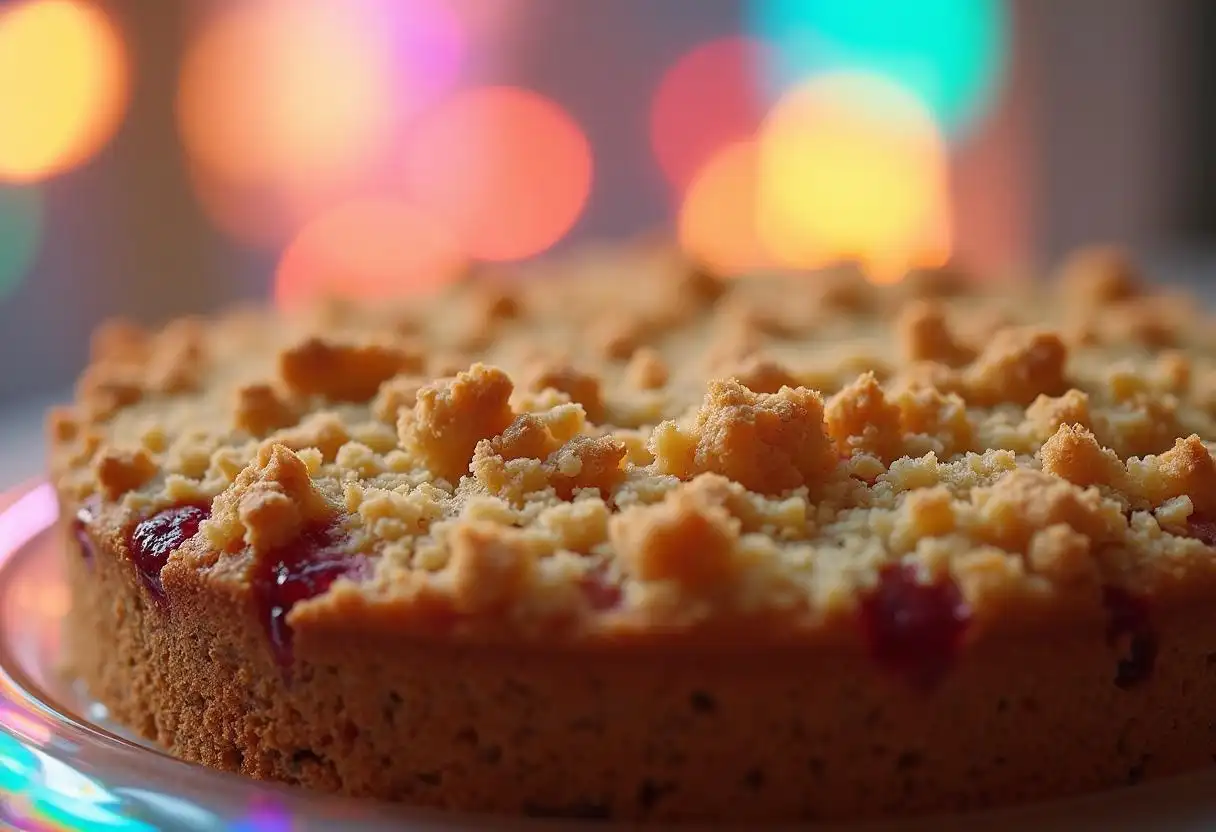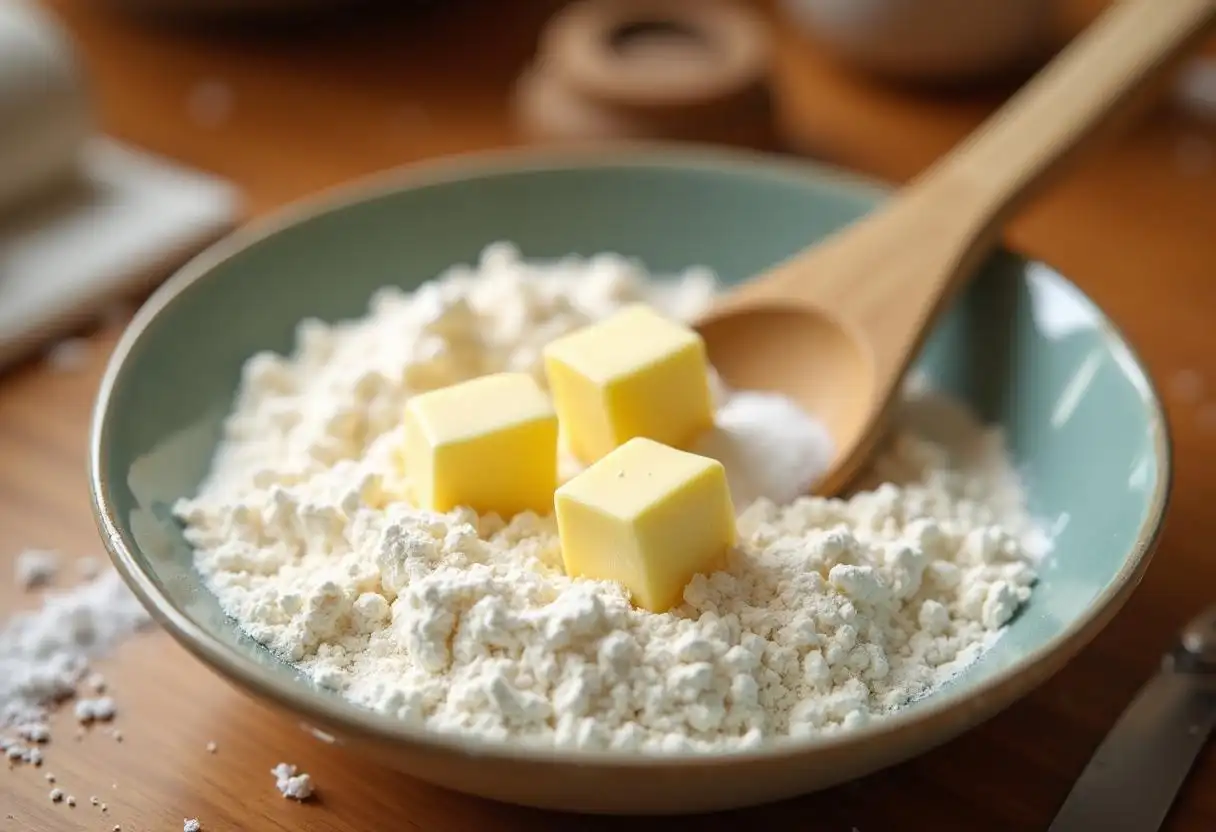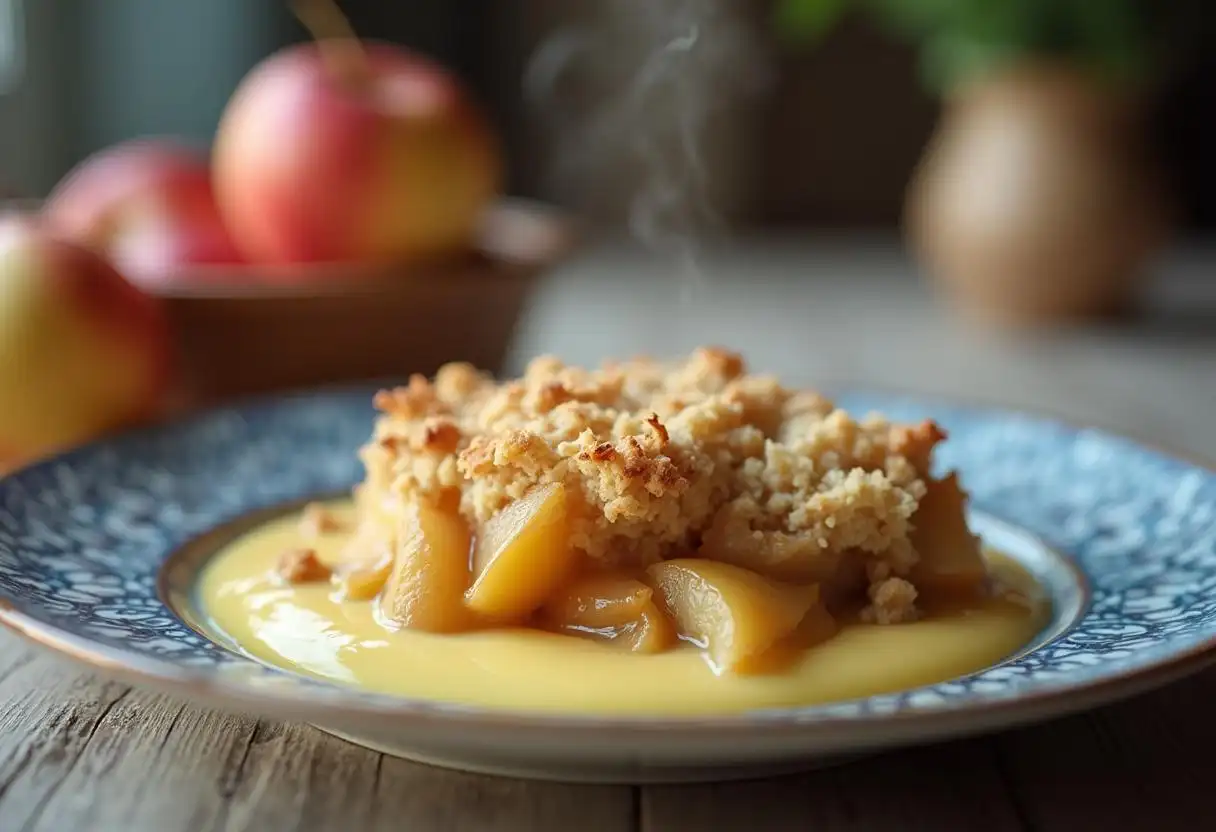Okay, let’s be honest, friends. Have you ever made an apple crumble (or any crumble, really!) where the topping was… well, less ‘crumbly’ and more ‘sadly claggy’? Or maybe tough enough to break a spoon? Mamma mia, I’ve definitely been there! You picture that perfect golden, buttery, actually crumbly topping, but reality serves up disappointment. My husband once tried to console me by calling my failed attempt ‘humble crumble’ – nice try, honey, but it wasn’t fooling anyone! We all crave that perfect texture. So, if you’re scratching your head wondering, what is the secret to good crumble? – pour yourself a coffee, because you’re in the right place! It’s a common kitchen quest!
Today, we’re cracking the code! We’re going to figure out exactly what makes that perfect crumble topping tick. Good news: it’s totally achievable, no fancy pastry chef skills required! Just a few simple tricks involving the right ingredients and techniques. Get ready to unlock the secrets and say ‘ciao’ to disappointing crumbles forever!
And hey, once you master this crumble, maybe you’ll want to try it on something adventurous? While we’re talking apples and cozy bakes, our guide on how to make apple cake Mary Berry style might be your next project!
Crumble 101: The Foundation for Success
Alright, before we spill the real secrets, let’s lay the groundwork. Crumble topping seems simple – and it is! – But understanding the basics is key. Nonna always said, “Know your tools, know your ingredients!” A good crumble relies on the beautiful friendship between just a few core players.
We’re talking flour, fat, and sugar. That’s pretty much it! But the ratio of these buddies, the type of fat and sugar you use, and how you combine them – that’s where the magic (or the mishap) happens. Get the balance right, use the right technique, and you’re golden. Get it wrong, and hello, sadness. So, let’s dig into each element and figure out what is the secret to good crumble!
Fat is Your Friend: Achieving the Perfect Crumble Texture
Okay, listen up, because fat is arguably the MVP (Most Valuable Player… or Pâté?) in the crumble game. If you ask me what is the secret to good crumble, paying attention to the fat is right at the top of the list! But it’s not just about having fat; it’s about the kind of fat and its temperature .
The Role of Cold Butter:
This is crucial, non-negotiable, tattoo-it-on-your-forearm important: use COLD BUTTER . Straight from the fridge, cut into small cubes. Why? When you rub cold butter into flour, you create little pockets and flakes of fat coated in flour. When these hit the hot oven, the water in the butter turns to steam, puffing up those pockets and creating gorgeous, flaky, crumbly layers. Warm or soft butter just mushes in and makes a paste. Cold is gold!
Different Fats & Their Impact:
Can you use other fats? Sure. Margarine or shortening might even make it seem more crumbly texturally, but honestly? You lose that irreplaceable, delicious, nutty flavor of real butter. For me, butter is the only way to go for the best tasting crumble. Nonna would agree! Life’s too short for flavorless crumble, right?
Using Melted Butter:
What about melted butter? Some recipes use it, often for things like streusel toppings that are meant to be clumpier or stickier, almost like a granola topping. But for a classic, light, truly crumbly crumble? Melted butter is generally a no-go. It coats the flour differently and won’t give you those lovely light layers. Stick with cold!
Thinking about those lovely apple and cinnamon flavors? Nigella Lawson has some great apple and cinnamon muffins that might inspire your next bake after mastering this crumble!
Flour Power: Choosing the Right Type
Next up: flour! It provides the structure for our crumble. While fat gets a lot of glory, the flour choice matters too when we’re uncovering what is the secret to good crumble. Let’s look at the options.
Plain Flour: The Go-To Choice
Good old plain (all-purpose) flour is your standard, reliable choice for crumble. Its moderate protein content gives just enough structure without making the topping tough. It lets the butter and sugar flavors shine through. Just remember, like we discussed when figuring out what makes a homemade cake crumble, measuring flour accurately is key! Too much flour = dry crumble.
Adding Oats or Nuts for Extra Texture:
Want to jazz things up? Absolutely! Adding rolled oats (not instant!) gives a lovely chewy, rustic texture and nutty flavor – fantastic with apples or berries. Chopped nuts like walnuts, pecans, or almonds add wonderful crunch and richness. You can substitute some of the flour (maybe 1/4 to 1/3) with oats or nuts, or just add them in addition for extra bulk. Play around!
The Importance of Sifting:
Should you sift the flour for crumble? Honestly, it’s less crucial than in cake baking, but it doesn’t hurt! Sifting ensures there are no sneaky lumps hiding in your flour and aerates it slightly, which can contribute to a lighter topping. If your flour looks clumpy, definitely give it a quick sift. Otherwise, you can probably skip it if you’re short on time (or clean bowls!).
And while we’re talking crumble toppings, remember you can use them on more than just fruit! They’re amazing on muffins or even an apple crumble cake. Oh, and prepping the fruit filling? Deciding whether to leave the skin on apples is another fun choice!
The Sugar Rush: The Sweet Touch
Fat? Check. Flour? Check. Now for the sweetness! Sugar doesn’t just make the crumble taste good; it also contributes to crispness and browning. Understanding its role is another piece of the puzzle in solving what is the secret to good crumble.
You’ve got choices here! Granulated sugar or caster (superfine) sugar are standard and provide clean sweetness and good crispness. Demerara or turbinado sugar have larger crystals and add a fantastic crunch and slight molasses flavor. Light or dark brown sugar brings moisture and a deeper, caramel-like taste – lovely with apples! You can even use a mix. The key is finding the balance you like and sticking to the recipe’s recommended amount, as too much sugar can make it greasy or too hard.
The Rubbing-In Technique: Making It Crumble
Okay, ingredients sorted, now for the most crucial action step! The “rubbing-in” method is THE technique that creates the crumble texture. Get this right, and you’ve basically mastered what is the secret to good crumble. It’s simpler than it sounds!
Put your flour and sugar in a bowl. Add your cold , cubed butter. Now, using just the tips of your fingers (not your warm palms!), lightly and quickly rub the butter into the dry ingredients. Lift your hands as you do it to incorporate air. Keep going until the mixture looks like coarse breadcrumbs, with some larger, pea-sized lumps remaining. Do not overmix! Stop as soon as it looks right. Overworking it will warm the butter and turn it into a paste. We want crumbs, not dough!
Baking it Right: The Finishing Touches
You’ve made the perfect crumble mix, sprinkled it generously over your delicious filling… now it’s time for the oven’s magic! Baking it correctly is the final step to crumble glory. Don’t stumble at the finish line!
A moderate oven temperature, usually around 350-375°F (180-190°C), works best. You want the heat high enough to crisp the topping and cook the filling, but not so high that the crumble burns before the fruit is tender. Bake until the topping is beautifully golden brown and the fruit filling underneath is bubbling merrily around the edges. Underbaking leads to a pale, potentially soggy topping. Overbaking leads to burnt bits. Keep an eye on it!
Understanding how ingredients affect texture is key in all baking, not just crumbles. Our guide on what makes a homemade cake crumble touches on similar principles!
Frequently Asked Questions (FAQ)
Okay, let’s quickly answer those last few crumble queries. Gotcha covered!
Q: How do I make my crumble more crumbly?
A: Use **COLD** butter, straight from the fridge! Rub it into the flour/sugar gently with just your fingertips until it looks like coarse breadcrumbs with some larger lumps. Don’t overmix it into a paste. That’s the #1 trick!
Q: What is the secret of crunchy crumble?
A: Cold butter is key! Using a sugar with larger crystals like granulated or demerara helps too. Adding some oats or nuts boosts crunch. And make sure you bake it long enough until it’s properly golden brown and crisp!
Q: Is it better to crumble with cold or melted butter?
A: For a classic, light, flaky crumble? COLD butter, 100%! Melted butter creates a denser, sometimes tougher or greasier topping. Stick with cold for the best traditional crumble texture.
Q: Why is my crumble topping not crunchy?
A: Could be a few things! Maybe the butter wasn’t cold enough? Or you overworked the mixture? Perhaps you didn’t bake it long enough or at a high enough temperature? Or maybe the ratio of fat/sugar/flour was off? Check those points!
And if you fall in love with crumble topping (who wouldn’t?), you might want to try it on our fabulous apple crumble cake recipe uk next!
Conclusion
So there you have it, my crumble-loving compadres! The mystery is solved! Now you officially know what is the secret to good crumble – it’s not one single thing, but a combination of using COLD butter, the right flour and sugar, and that gentle ‘rubbing-in’ technique, followed by proper baking. See? Totally achievable!
I really hope these tips help you banish soggy or tough toppings forever and bake up crumbles that make your family (and you!) incredibly happy. My kids cheer when they see crumble coming out of the oven! Go forth, put this wisdom into practice, and enjoy the delicious, buttery, crumbly rewards. Happy baking! And remember, understanding ingredients helps in all baking – even figuring out how to keep chocolate cake moist! Buon appetito!



Leave a Reply